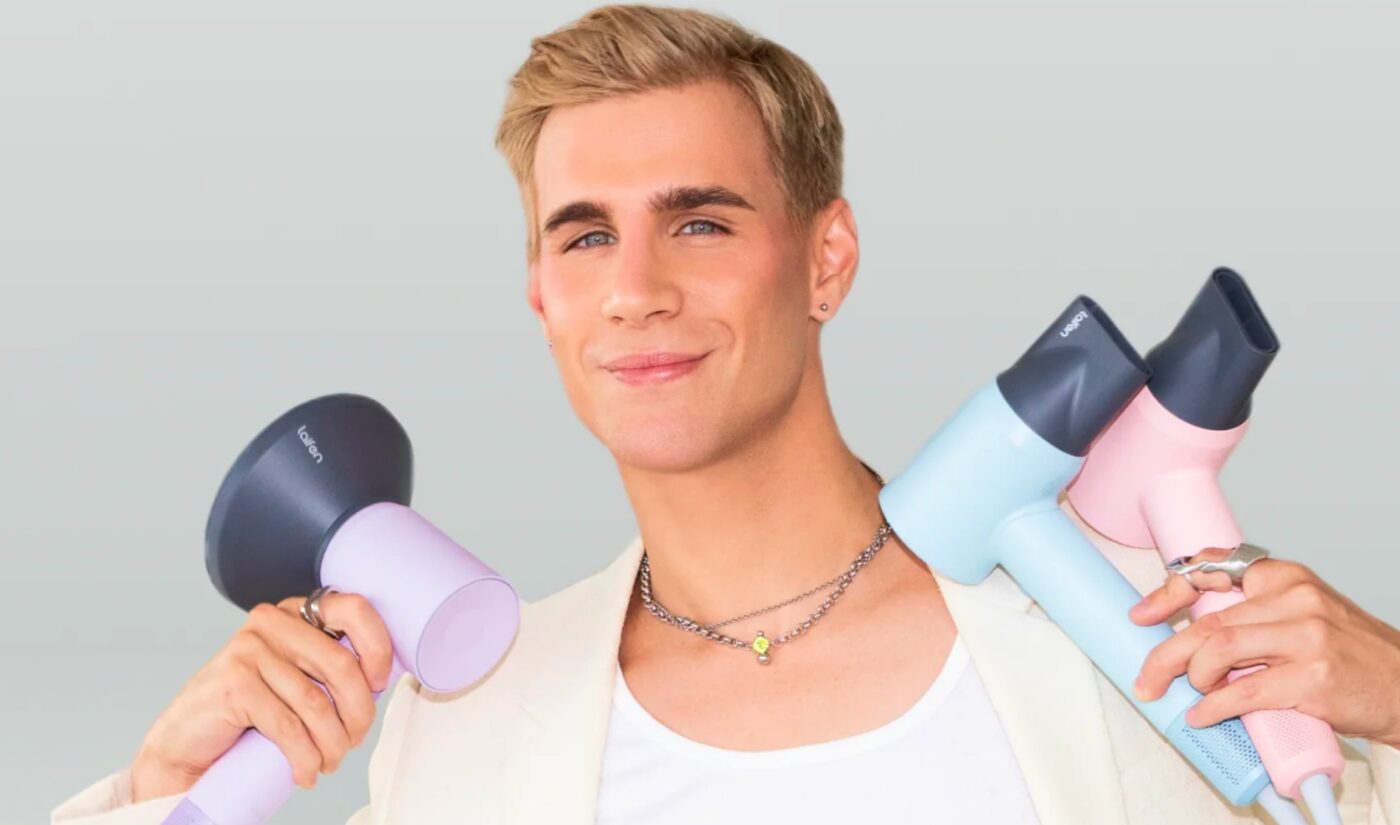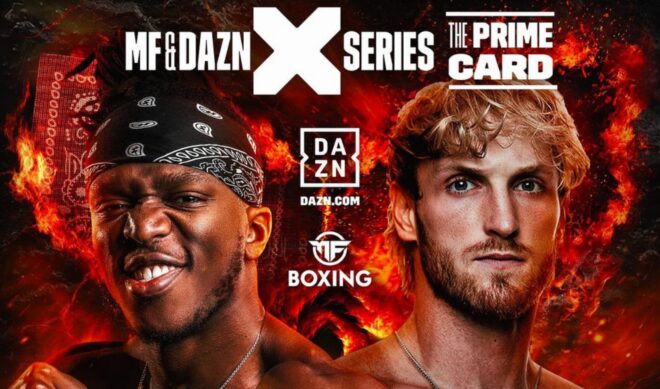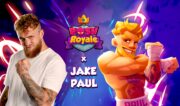In 2023, we began publishing weekly recaps of the most-watched sponsored videos on YouTube. After all, marketers spent nearly $1 billion on YouTube campaigns last year, and that number is projected to rise even higher.
We compiled our rankings using data from our partners at Gospel Stats. Some of our findings were obvious and to be expected:
- MrBeast is the most popular creator on YouTube.
- Digital learning platforms like to partner with educational channels like Veritasium and Kurzgesagt.
- VPN companies like to partner with…pretty much everyone.
We also drew some insights that felt new and noteworthy. Influencer marketing may not be as novel as it once was, but the industry is still subject to constant change, especially after experiencing a boom during the height of the COVID-19 pandemic.

Subscribe for daily Tubefilter Top Stories
In all our analysis of 2023 YouTuber campaigns, four recurring themes stood out. As 2024 is underway, look out for these trends (in no particular order):
1. The sponsor pool is diversifying in surprising ways.
At the 2023 edition of VidCon Anaheim, our own Josh Cohen took the stage to talk about a paradigm shift that’s currently occurring in the world of online video. The average Industry Track attendee is aware that agencies are shifting ad budgets from TV to digital, but Josh’s analysis focused on a vertical that isn’t usually mentioned in the same sentence as influencer marketing: personal injury lawyers.
The Tubefilter and Streamy Awards Founder noticed that personal injury law firms are exploring new marketing methods. Once upon a time, Cellino & Barnes cultivated name recognition through a radio jingle, but these days, a leading personal injury firm is spending big on YouTube instead.
Enter Morgan & Morgan, which has offices in all 50 U.S. states. As Josh noted in his address, Morgan & Morgan sponsored 226 YouTube videos with over 50,000 views between January and June of 2023. That was good for an average of 1.32 sponsored videos per day. The creators who partnered with Morgan & Morgan were a varied group ranging from Minecraft players to ASMR stars.
“$1.352 billion. That is the number, according to the American Tort Reform Association, that personal injury law firms and other legal services spent on television and radio ads in 2022,” Josh said during his address. “And now because of new technology, demographics, shifts in content consumption, and savvy marketers, a small portion of that $1.352 billion is going to be spent on influencer marketing. It’s not happening overnight, but it’s moving in that direction.”
The case of Morgan & Morgan is a reminder that the dollars flowing into the influencer marketing industry aren’t coming from a single source; they’re coming from everywhere.
Olga Wese – founder of Berlin-based influencer marketing agency Joined Media Group Brands & Talents – said it’s a sign of brands exploring options outside of their traditional go-to marketing platforms. “Influencer marketing is growing due to the shrinking traffic on Facebook and TV and the expanding demographics on major social platforms like TikTok and YouTube,” Wese told Tubefilter.
Wese cited household products, car makers, and online services as three brand categories that are bringing more variety into the influencer marketing world. When it comes to sponsorships, creators have more choices than ever before. That breadth leads to more opportunities for optimized campaigns that dig into specific subcategories of the influencer community. Finding the right brand fit is easier than ever before — and there are no jingles required.
2. Brands that buy into YouTube marketing are dialing up blitzes.
You know what’s better than sponsoring one prominent YouTuber? Sponsoring 33 prominent YouTubers at the same time.
The mobile game Watcher of Realms employed that strategy for its launch day in July 2023. Over a three-day upload period, it attached itself to 33 YouTube videos that each had at least 50,000 views within their first seven days.
These “influencer marketing blitzes” are becoming more common, especially in the world of video games. Three months after the start of the Watcher of Realms campaign, mobile RPG Dungeon Hunter VI built hype by sponsoring 87 YouTube videos in ten days. The game’s spokespeople ranged from upstart gamers like MandJTV Plays to familiar favorites like Philip DeFranco.
Joined Media Group worked with Watcher of Realms on the game’s midsummer influencer campaign. Wese explained that marketing blitzes have become popular in the gaming world because publishers want to see a strong ROI shortly after launching new titles. “Since such games work as a service, studios must ensure that the investment in marketing is returning with a positive ROI,” Wese told Tubefilter. “This is why most of the games only moderately pre-seed and pre-heat before launch and put most of the budget on the launch.”
The sheer scale of influencer marketing blitzes allows them to cut through a noisy cultural space. “In today’s age, consumers are targeted by so many ads, games, and products that their attention can quickly shift,” Wese said. “Our extensive experience promoting diverse similar games and the market data of the competitors allowed us to pick the best-fit creators to ensure reach, conversions, and positive ROI.”
3. Third-party brands are plugging creators into their paid media campaigns
A creator-led product may offer a perfect synergy between brand and spokesperson, but Wese also emphasized that third-party sponsors still offer “good and exciting opportunities,” especially when they ink influencer marketing deals that go beyond the “simple ad-read.” In 2023, Joined Media Group ran several campaigns that fit that description, including a partnership that gave Jake Paul the freedom to design a playable character in the mobile game Rush Royale.
Prizma Talent Management is another firm that’s bullish on the idea of “creators as creative.” Prizma Founder and CEO Leila Marsh told Tubefilter that those partnerships offer creators “much more, if not complete creative control, as opposed to being given a campaign brief to fit the brand’s messaging into.”
That unorthodox approach won’t be the right choice for every campaign. Marsh said that brands can give creators more leeway when working with “creative minds, self-starters” or “those who thrive off being innovative and original while sharing their own experience, and not being boxed in to only use brand-provided messaging.”
A Prizma client who fits that bill is outspoken hairdresser and entrepreneur Brad Mondo, who was given creative control when he became a brand ambassador for hair dryer brand Laifen. Mondo’s Laifen spots were far from ordinary; they looked more like commercials than stilted ad reads. That was part of the idea, since Laifen ran Mondo’s endorsements as paid TrueView ads.
Mondo wore multiple hats during production — he functioned not only an influencer partner, but also an actor, model, and creative director. For the Laifen partnership, he contributed to a paid campaign on the brand’s channel. In other cases, such as his deal with Redken, the brand put advertising dollars behind content on Mondo’s social channels.
Another Prizma client, lifestyle creator Tara Henderson, occupied a similar space when she styled her own children as part of a promotion for fantasy photography service Enchanted Fairies. “We have found that allowing creators to reiterate brand messaging and calls to action in their own tone of voice consistently results in higher conversion rates for the brand and higher views on talent’s content,” Marsh told Tubefilter.
Other Prizma clients whose sponsored posts were converted into paid media include Dr. Julia Morgan and Amy Lee. That form of partnership allows parties on both sides of the deal to contribute their expertise. Creators can bring their content development and audience retention skills to the spots, while brands can take control of the business end of the campaigns.
But that content development from creators should be informed. Wese advises influencers to take advantage of the “tremendous amount of data and market knowledge” brands have collected. Even in cases where creators are given the freedom to design campaigns, they must still remember that they are being hired as spokespeople. “The sweet spot of a successful partnership is when both sides take the best working practices and collaborate,” Wese told Tubefilter. “Ideally, the content should be fun and interesting to watch while natively making the content around the sponsorship and the product’s main features.”
4. Who needs brand partners? Creators are shilling for their own products.
Feastables. Crunchlabs. Prime Hydration. All three of those brands have at least two things in common: They’re all led by creators, and they all achieved #1 finishes in our Gospel Stats Weekly Brand Reports.
The fate of creator-led companies in the free market remains to be seen. There are certainly some hurdles to cross, even if VC dollars are still coming into the creator economy. But brands like Feastables have a key advantage over more traditional competitors: Free marketing.
Creators are well-equipped to advertise their own products, since they can have perfect understanding of their campaign goals and direct access to their target audience (i.e. their subscribers). That’s why Crunchlabs is featured in most Mark Rober videos, Prime shows up in most of Logan Paul‘s Impaulsive episodes, and Feastables is a regular MrBeast sponsor. Jimmy Donaldson likes to shill on behalf of his friends, too. He took Prime to the top of the Gospel Stats Weekly Brand Report in November.
By saving on marketing costs, creators can make splashier investments in their companies. That’s how we ended up with the first Super Bowl commercial for a creator product earlier this year. MrBeast, like Prime founders Logan Paul and KSI, plotted out his own Big Game spot, though he ultimately reserved it for digital platforms.
I wanted to run this as a Super Bowl ad but 7 million dollars was a lot of $ so you guys get it here
Try our Deez Nuts bar! – https://t.co/PqfLIIFHu4 pic.twitter.com/NSRtS7t49Q
— MrBeast (@MrBeast) February 14, 2023
“Creators are more motivated to promote their products for several reasons,” Wese told Tubefilter. “It is more authentic to them and those products are better aligned with their audience, creators clearly understand the math behind those products and the relation between the promotion and the result; it’s also a long-term promotion/investment into their name and brand as an opposite to 3rd party endorsements – all of that make them put much more energy behind the merch promos.”
Wese clarified that creators can still encounter pitfalls when promoting their own companies. “They should make sure they understand and know their product, manufacturing, and sales process,” she said, “as several creators have run into controversies with their products in the past.”
One notable controversy occurred in 2021, when streamer Valkyrae shuttered her skincare brand RFLCT after fans accused her of peddling pseudoscientific information.
The future is big and bold.
Regardless of the components of their execution, the campaigns that caught our attention in 2023 took bold steps to ensure that the products on display stuck with their target audiences. That’s why Panera and Pizza Hut attempted to ape top TikTok memes — they were searching for the social chatter that a well-executed digital campaign can produce.
With the influencer marketing business projected to grow to nearly $200 billion by 2032, there will be plenty more resources available for brands that want to conduct their own YouTube, Instagram, TikTok, and Snapchat blitzes. Small-scale strategies still have their uses, but these days, it often pays to go big.













